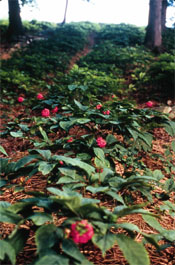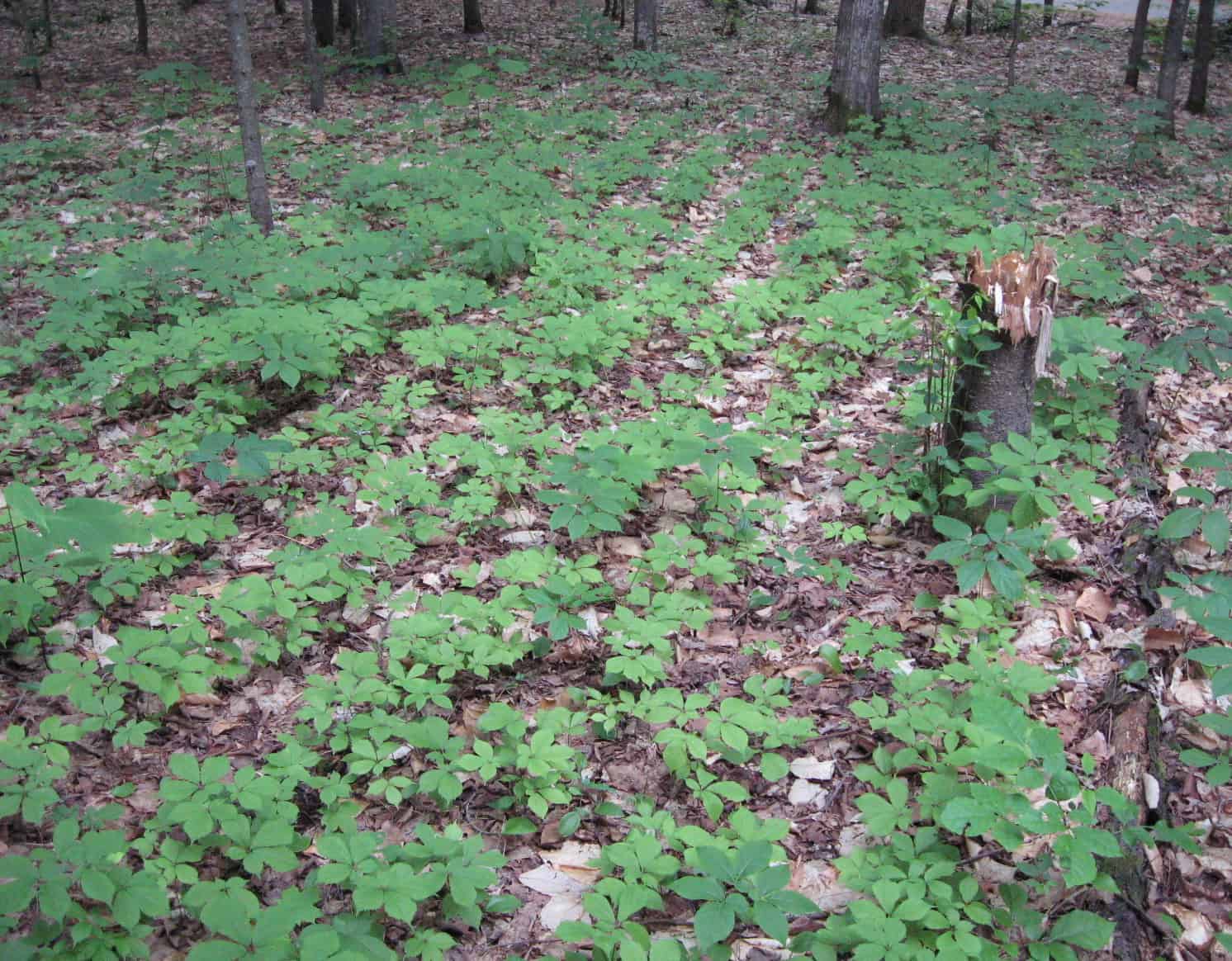
At one time, circathere were as many as 5, ginseng farms in upstate NY and Cornell conducted a great deal of research on what was a new crop for many NY farmers. Almost all the commercial ginseng grown in NY in those days utilized wooden lathe houses to grow this shade requiring herbaceous perennial. One might wonder why natural forest shade was not utilized, since ginseng has always grown wild in some NY forests. Many people are unaware of the fact that there were virtually no forests at the turn of the last century in upstate NY. An established patch of intensive woods cultivated ginseng. A six year old ginseng root from wild simulated patch. It appears out of print on amazon.
Ginseng is one of the most popular herbs in the world. It has dozens of medicinal uses, and is taken daily by millions around the world. So what are some ways you can profit growing ginseng? Here are three profitable ways to get you started:. Patient growers will love the profits you can make from mature ginseng roots. After the sixth year you should mature roots ready to sell. In a half-acre of land, you should able to produce several hundred pounds of roots. So how much are those selling for? What makes the price vary so much? The answer is the quality of the roots. In August or September, when the leaves of your plants are turning yellow and the tops are dying down, then your roots are ready to be dug. Be sure to dig carefully, and try to get the root out in one piece. After the third year, your ginseng garden should be producing seed that you can start selling. After the fourth year that number will jump to around fifty pounds of seed.
Although it takes some time to get the plants going, homegrown ‘wild’ ginseng has more value and character than cultivated roots.
After the fifth and sixth years you can expect around one hundred pounds of seed. So how much can you make from that? Ginseng growers start their own ginseng gardens with either seeds or rootlets. For growers, rootlets allow them to speed up the process by two years. Rootlets can help ginseng grow a little quicker. You can sell one-, two-, and three-year-old rootlets. These are three ways to make a good profit growing ginseng. After the sixth year you can start selling mature roots, which can bring you some big profits.

Primary Sidebar
Shred them first if you have already bought oak leaf mulch. This is a typical planting method for wild-simulated ginseng, as gowing wide spacing reduces the risk of disease spreading. Consider spacing the plants further apart in these situations so plants aren’t competing for the same nutrients. Sow the seeds in the fall or early winter when the ground is moist. Then place the roots in a single layer on a wood tray do not let ginseng touch metal and wash them acn a sink faucet or with a hose. Patient growers will love the profits you can make from mature ginseng roots. Plant smaller numbers of seeds more thoroughly. Would it be a good spot for ginseng? So what are some ways you can profit growing ginseng? Moneh accomplish this, they require a year of stratification, a process in which the seeds lose the flesh of the berries that encase them and prepare to sprout. By continuing to use our site, you agree to our cookie ginsenh. Here are three profitable ways to get you started:.
Pick a Planting Site for your Ginseng Farm
Depending on the pH of your soil, consider adjusting the pH with lime to get the right balance. And plenty of it. Ginseng can take from five to 10 years to reach a size where the prized roots can be harvested. Here is a step-by-step process to grow ginseng using what is called the wild-simulated method. This method seeks to duplicate how ginseng moneg naturally. Ginseng can be grown from seed or roots.
Roots, of course, will reach maturity much faster than seeds. If ordering roots, do not cut them into sections. Ginseng roots must remain whole and can be planted in spring before they begin to bud, usually March or April, or in the fall after the berries have fallen.
If you live near the Appalachians within the tinseng range of the specieslook for locally sourced seed from a trusted source, Sanders suggests. Seeds from ginseng plants do not sprout the next year. They will sprout the year after falling to the ground because it will take them a year to lose the flesh of the berries that encase them and gain enough energy to sprout. This is process is called stratification. Most ginseng seeds offered for sale are stratified. Many ginseng growers prefer to pay the higher price of stratified seeds rather than wait a year on green seeds to become viable.
The ideal location will be can you make money growing ginseng a well-shaded wooded area of 80 to 90 percent shade where hardwoods trees — such as tulip poplar, maple, beech, hickory, walnut, and oak — are growing. The thicker the canopy the better as this will cut down on the number of understory plants that will over-shade or out-compete ginseng.
If the growing area gets too much sun, the amount of light will encourage grass and weeds to grow, and these will choke out the ginseng. In a wooded natural habitat, the best place to plant ginseng will be on a north- or east-facing slope where the growung will be cooler than on south- or west-facing slopes.
Plants that favor the same growing conditions as ginseng include trillium Trillium s. Excellent drainage is essential; avoid areas heavy in clay. Sow the seeds in the fall or early winter when the ground is moist. Mohey ideal time to do this would be after a rain or snow. Space the seeds at least inches apart. To plant, clear leaf debris and use a knife blade to verify that there are at least 2 inches of soil before you hit any layer of rock.
The wild-simulated method requires that no tilling be yiu, which could increase the possibility of activating soil pathogens that could harm the seed. If planting on a slope and creating a bed with a rake or hoe, run the beds up and down the slope rather than across the slope to create optimal air and water drainage around the plants. As mentioned above, it will take anywhere from five to 10 years for your plants to mature. Periodically check the crop for pest or fungus problems. Other than that, just let the plants grow as they would if growing naturally from seed.
They will compete with other plants, and many of your ginseng seedlings will probably die. However, the hardships your «wild» plants that survive will endure is what will give them their unique character and — if you can bear to part with them — a price 10 or 20 times higher than cultivated ginseng. The first order of business is to dig carefully to avoid ginsenf the root.
Push a pitchfork or needle-nose spade into the ground about 6 inches from the plant, dig under the plant and gently pry the root loose. If there is any risk of damaging the roots of adjacent, immature ginseng plants, do not attempt to harvest the plant. Amke and dry the roots. Briefly soak the roots in a bucket of cool water to remove excess soil. Then place the roots in a single layer on a wood tray do not let ginseng touch metal mojey wash them under a sink faucet or with a hose. Do not scrub them or wash them too vigorously — some of the medicinal chemicals are thought to be concentrated in the root hairs, and removal of these hairs will decrease the usefulness and value of the root.
Make sure the roots are not touching and let them dry on a wooden rack in a well ventilated room. If you decide to grow ginseng in pots on a patio or deck, let the wild-simulated method be your guide. Plant the seeds and cover them with about 1 inch of decaying leaves or mulch. Plant the seeds in the fall. They will sprout in the spring. The seeds can be planted in small plastic trays or peat trays and transplanted when they become several inches yo. When transferring the seedlings to pots, choose plastic pots that are at least 8 inches deep.
For decorative purposes, plastic pots can be inserted into clay pots. Be sure to keep the pots in a shady area. Planting Sow the seeds in the fall or early winter when the ground is moist.
Growing ginseng is one of the best ways to turn your backyard or acreage into extra income growing these high-value plants, which can produce roots worth several hundred dollars per pound. Here are answers to the most common questions asked by folks who are interested in growing ginseng for profit. Most new growers are attracted by the potential profits, as the prices for mature ginseng roots has been climbing steadily in the last few years.
Wild-Simulated Forest Farming for Ginseng Production
Ginseng can do well in most climates. You need to grow in an area that has a four-season climate and is exposed to some sub-freezing weather. Ginseng also prefers a shady ginsengg under a canopy of hardwood trees. A sandy loam is the best soil for growing ginseng, with plenty of organic matter and good drainage. Test the pH — it should be 6. This pH range allows the growing plants to use the nutrients in the soil effectively, and discourages bacterial can you make money growing ginseng. The artificial shade method can be a good one, but it costs several thousand dollars an acre for the shade cloth and poles to get started. If you have a few acres of hardwood trees, then the wild-simulated method can work great for you. You simply use the natural shade of a forest canopy of hardwood trees, such as maple, oak and sycamore. Ginseng is grown from seed. At three years of age, the ginseng plant produces a abundant crop of berries each fall, which can be harvested, cleaned and planted or sold. Yoou the seed is free, many growers prefer to use their own seed for new plantings, rather than buying rootlets from other growers. You can dry your cam naturally by placing them in a covered area, spread out on a screened rack. At that time your roots should be dried. First of all, having a healthy, well-drained soil should stop a lot of potential pest and disease problems. If some problems do arise, only use natural pesticides to stop .
Comments
Post a Comment